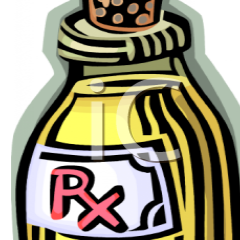 There’s an explosion of stuff about paediatrics and here in the ADC we hope to show you the sparkliest bits. Drugs (good ones, not naughty ones) are very interesting and @Pharmaforkids is going to explore some of the mysteries of dosing and formulation in a series of articles.
There’s an explosion of stuff about paediatrics and here in the ADC we hope to show you the sparkliest bits. Drugs (good ones, not naughty ones) are very interesting and @Pharmaforkids is going to explore some of the mysteries of dosing and formulation in a series of articles.
This may sound simple, and there is one answer that will probably get you through your 1st jobs in paediatrics, RCPCH membership, and probably a significant way into your consultant/GP practice – look in the British National Formulary for Children (BNFc).
But where do formularies get their data from? Does it matter? Well yes, if you ask me, but I am paediatric pharmacologist!
It all relates to the early phases of drug development – pharmacokinetics (what the body does to a drug – basically absorption, distribution, metabolism and excretion), and pharmacodynamics (what the drug does to the body), plus pharmacogenomics (how a person’s genetics affect the effectiveness of a medicine – both how well it works and how toxic it might be) and the environment (do the forget to collect repeat prescriptions)? Do the child’s parents smoke (or if a teenager –do they smoke/drink) ?
Then there are the additional challenges that paediatrics faces with regard to working out the right dose:
- For older medicines, children were excluded from the drug development processes that worked out the “right” doses for adult patients. Doses have therefore been estimated, and tried ad-hoc until clinicians think they have got it right. This is sometimes helpful, sometimes woefully inaccurate!
- For newer medicines, although the EU and US have legislation to ensure data is now collected on children as part of the drug development process, the very nature of the process means that we cannot know the full risk benefit profile of a drug early on its life (even quite late on for some – there is still a startling lack of data for routinely given drugs, so for example we do not know how much salbutamol an asthmatic gets through nebulisers, or even when given IV, and we don’t know for certain the optimal dose of phenytoin IV in status epilepticus).
- Children develop physiologically, and so a dose that is correct for one age group, may not be right for another – and there are often situations where the dose will need to vary for different ages (or be contraindicated altogether – think systemic chloramphenicol in neonates for example).
- Children have different diseases to the adults that take the medicines in the clinical trials. Asthma is a good example here – adults with asthma are often elderly smokers. This is very very different to a wheezy 5 year old with eczema and hayfever.
- Children may have different side effects that need to be considered – clearly growth failure (steroids are the main culprit here) is a purely paediatric adverse drug reaction, but there are many others that disproportionately affect children from Reye’s syndrome to Valproate hepatotoxicity.
This blog will dig into each of these individually, including the deeply confusing world of pharmacogenomics which will (hopefully) start to increasingly affect paediatrics in the years to come. I hope to make it meaningful to paediatrics and, then, although you should still go to the BNFc, the answer to the question at the start will not seem so easy!